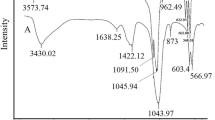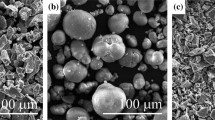Abstract
Titanium-matrix composite with 20 vol% HA ceramic was fabricated by hot pressing technique and the microstructure of the composite was studied by transmission electron microscope (TEM). The mechanical and biological properties of the composite were investigated by mechanical and in vivo studies. The experimental results by TEM observation show the bonding state of Ti/HA interface in Ti-20 vol% HA composite with the relative density of 97.86% is good, however, there exists an interfacial transition zone between Ti and HA. In Ti matrix of the composite and pure Ti metal, an interesting substructure comprised of screw dislocations with Burgers vectors b of 1/3 〈 11¯20〉 was found. Screw dislocations are straight and regularly distributed, and cross slip can be observed. The subgrain boundaries consist of dislocation network walls with equidistant dislocation lines in the same direction. Elastic modulus and Vicker's hardness of Ti-20 vol%HA composite are 102.6 GPa and 3.41 GPa respectively. Owing to the existence of 20 vol% HA ceramic, bending strength and fracture toughness of the composite decrease sharply to 170.1 MPa and 3.57 MPa ⋅ m1/2 respectively, which are only about 17.5 and 12% of those of pure Ti metal. In vivo studies indicate Ti-20 vol% HA composite has good biocompatibility, and even better osteointegration ability than pure titanium, especially in the early stage after the implantation. In conclusion, Ti-20 vol% HA composite is suitable for heavy load-bearing hard tissue replacement from the point of view of both mechanical properties and biocompatibility.
Similar content being viewed by others
References
L. L. HENCH, J. Am. Ceram. Soc. 74 (1991) 1487.
D. F. WILLIAMS, Materials Science and Technology 3 (1987) 797.
W. SUCHANEK and M. YOSHIMURA, J. Mater. Res. 13 (1998) 94.
W. BONFIELD, in “Bioceramics: Materials Characteristics vs In Vivo Behavior”, Vol. 523, edited by P. Ducheyne and J. E. Lemons (Annals of New York Academy of Science, New York, 1988) pp. 173.
R. VAN NOORT, J. Mater. Sci. 22 (1987) 3801.
K. WANG, Mater. Sci. Eng. A213 (1996) 134.
F. BROSSA, A. CIGADA, R. CHIESA, L. PARACCHINI and C. CONSONNI, J. Mater. Sci.: Mater. Med. 5 (1994) 855.
C. Y. YANG, B. C. WANG, E. CHANG and B. C. WU, ibid. 6 (1995) 258.
C. CHU, P. LIN, Y. DONG, X. XUE, J. ZHU and Z. YIN, ibid. 13 (2002) 985.
C. CHU, X. XUE, J. ZHU and Z. YIN, ibid. 2004 (In press).
C. L. CHU, J. C. ZHU, Z. D. YIN and S. D. WANG, Functional Materials 30 (1999) 606.
F. WAKAI, Y. KODAMA, S. SAKAGAWA and T. NONAMI, J. Am. Ceram. Soc. 73 (1990) 457.
X. ZHANG, G. H. M. GUBBELS, R. A. TERPSTRA and R. METSELAAR, J. Mater. Sci. 32 (1997) 235.
K. HIRANO and T. SUZUKI, in Proc. of the First Inter. Symp. on FGM, edited by M. YAMANOUCHI, M. KOIZUMI, T. HIRAI and I. SHIOTA, (Sendai, Japan, 1990) p. 313.
Y. C. FUNG, “Biomechanics: Mechanical Properties of Living Tissues”, New York: Springer-Verlag Inc., 1993.
M. H. YOO and J. K. LEE, Philosophical Magazine 63(5) (1991) 987.
G. X. LU and Z. S. HOU, “The Course of Metallography,” Shanghai: Shanghai Science & Technology Press, 1985, p. 177.
T. KEHAGIAS, P. KOMNINOU and G. P. DIMITRAKOPULOS, Scr Metall Mater 30(10) (1994) 1311.
D. Z. YANG, “Dislocations and Strengthening Mechanism of Metal”, Harbin: Harbin Institute of Technology Press, 1991, p. 107.
Author information
Authors and Affiliations
Corresponding author
Rights and permissions
About this article
Cite this article
Chu, C., Xue, X., Zhu, J. et al. Fabrication and characterization of titanium-matrix composite with 20 vol% hydroxyapatite for use as heavy load-bearing hard tissue replacement. J Mater Sci: Mater Med 17, 245–251 (2006). https://doi.org/10.1007/s10856-006-7310-6
Received:
Accepted:
Issue Date:
DOI: https://doi.org/10.1007/s10856-006-7310-6




